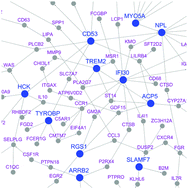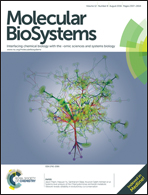Molecular and genetic inflammation networks in major human diseases†
Abstract
It has been well-recognized that inflammation alongside tissue repair and damage maintaining tissue homeostasis determines the initiation and progression of complex diseases. Albeit with the accomplishment of having captured the most critical inflammation-involved molecules, genetic susceptibilities, epigenetic factors, and environmental factors, our schemata on the role of inflammation in complex diseases remain largely patchy, in part due to the success of reductionism in terms of research methodology per se. Omics data alongside the advances in data integration technologies have enabled reconstruction of molecular and genetic inflammation networks which shed light on the underlying pathophysiology of complex diseases or clinical conditions. Given the proven beneficial role of anti-inflammation in coronary heart disease as well as other complex diseases and immunotherapy as a revolutionary transition in oncology, it becomes timely to review our current understanding of the molecular and genetic inflammation networks underlying major human diseases. In this review, we first briefly discuss the complexity of infectious diseases and then highlight recently uncovered molecular and genetic inflammation networks in other major human diseases including obesity, type II diabetes, coronary heart disease, late onset Alzheimer’s disease, Parkinson’s disease, and sporadic cancer. The commonality and specificity of these molecular networks are addressed in the context of genetics based on genome-wide association study (GWAS). The double-sword role of inflammation, such as how the aberrant type 1 and/or type 2 immunity leads to chronic and severe clinical conditions, remains open in terms of the inflammasome and the core inflammatome network features. Increasingly available large Omics and clinical data in tandem with systems biology approaches have offered an exciting yet challenging opportunity toward reconstruction of more comprehensive and dynamic molecular and genetic inflammation networks, which hold great promise in transiting network snapshots to video-style multi-scale interplays of disease mechanisms, in turn leading to effective clinical intervention.


 Please wait while we load your content...
Please wait while we load your content...